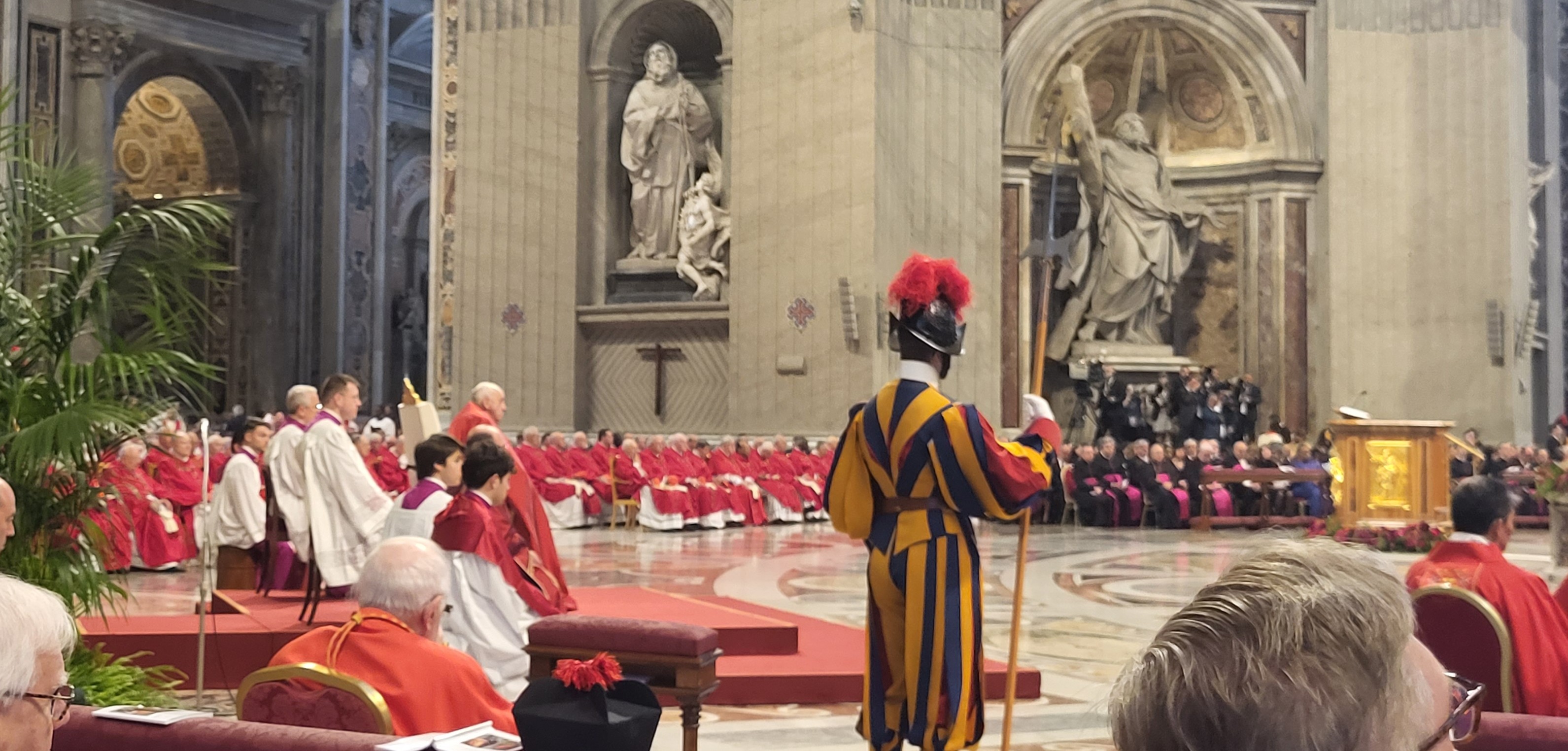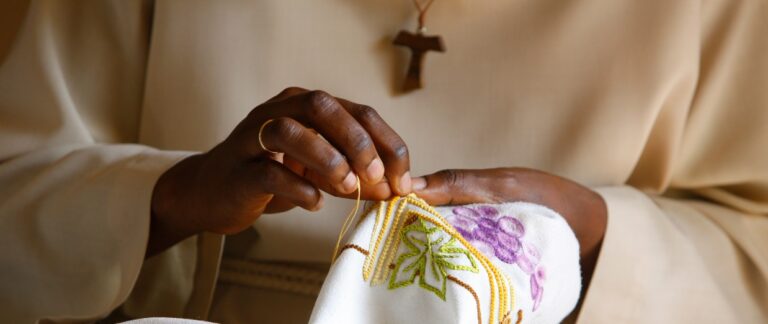
THE PALLIUM MASS

I am fortunate to be in Rome studying this summer with a group of students from Regis College and St. Michael’s College, University of Toronto. And I am supremely fortunate to have been here on June 29, the feast of Saints Peter and Paul. This day, unsurprisingly, is a holiday here in Rome. It is also the day in which the newest Archbishops of the world are presented with their pallium. This is a liturgical vestment that might be described as a cross between a flat cowl and a stole. The short, y-shaped pallium is made of white lamb’s wool. And not just any lamb’s wool. Two lambs, lovingly raised by Trappist monks are carefully cleaned up (including a wash and a blow dry) by the Sisters of the Holy Family of Nazareth. They are then brought to the Pope around the feast of St. Agnes in January and sheared sometime after Easter. The same sisters then card, spin and weave this wool and craft it into pallia which they adorn with crosses. The pallium symbolizes the Archbishop’s role as a shepherd. As he places the pallium around his neck, he is reminded of the Good Shepherd holding the stray sheep on his shoulders. He is also reminded of his own responsibility to those most in need of God’s loving care. The giving of the pallium is an ancient tradition first recorded as early as the fourth century.
Our contingent of students had the privilege of attending the Mass at St. Peter’s Basilica. I had expected a lengthy ritual. After all, there would be 44 Archbishops from 32 different countries (including one Canadian – Archbishop Frank Leo from Toronto). I was surprised to find, however, that it was a rather short ritual. Once the pallia were brought up from the tomb of St. Peter, they were blessed by the Pope and then given to the Papal Representatives (Apostolic Nuncio) of each metropolitan area. After this, the Archbishops pledged the traditional oath of fidelity. The rite was over. The Pope did not officially place the pallium on the men’s shoulders. Instead, a ritual of conferral will take place at a second celebration when each Archbishop returns to his home diocese.
This second celebration is a modification that was introduced by Pope Francis in 2015. It may appear to be a small change, but it is significant in what it conveys about the nature of the Bishop’s role. He is not simply to be the Pope’s delegate but the true pastor of his designated region. He is entrusted to care for the people, to hear their concerns, to celebrate with them in times of joy and to comfort them in times of sorrow. The connection to the Pope remains strong, however, as the Bishop ensures not only that the universal church is manifest in the local, but that the local church is deeply connected to the universal. The change in the ritual is also significant because it involves the active participation of the people of God in the rite. Previously, few people were even aware of the practice. This way of involving the people from the Archdiocese in the celebration not only connects the servant of God with the people he serves, but it also holds people and pastor accountable to one another. The Archbishop, wearing his pallium, takes his place in the church as a prudent, wise and courageous leader – modelling his life on the Good Shepherd.
Christine Way Skinner has been a pastoral minister for thirty years and has recently begun a doctoral program in theology at St. Michael’s College. Together with her husband, Michael, she has parented six wonderful children. She has written a number of books for Novalis on living the Catholic faith for both adults and children.
(Sources: https://www.irenebrination.com/irenebrination_notes_on_a/2019/01/st-agnes-lambs-pallium.html)



Thankyou for this, very enlightening!
???
Sent from my iPhone